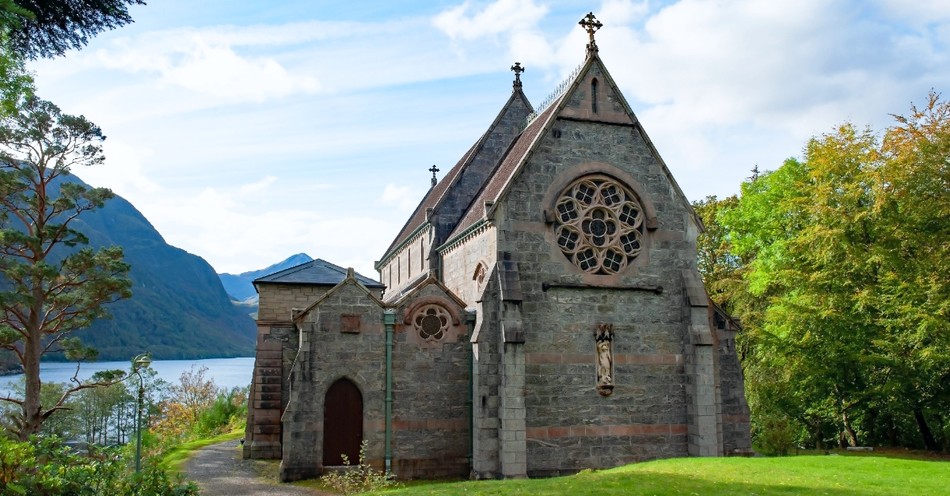Church services are held in private homes and at recreation centers. Cinemas, pubs, and retail stores are rented weekly or completely renovated to become places of worship. The earliest church body met in the home of a believer, but that was when participants of what would later be called “Christianity” were merely known as “saints.”
What does the Lord think about worship services being held in structures which were not designed for that purpose? Does the use of a secular building negatively affect worship?
What Is the Church?
Robert Velarde explained that “biblically speaking, a church is much more than a building. In fact, some would say that the church is not a building at all, but is all about the people.”
Velarde based his opinion on New Testament teaching. The apostles taught that the church is a body, not a place. “Let the word of Christ dwell in you richly” (Colossians 3:16). Dwell in you — not in the place, but in the people. To dwell or skénoó means to have one's tent, to live.
Generally, one lives in a tent, but the “tent” in this case is really a structure of faith built on the foundation of Christ’s righteousness, living inside the dweller.
Paul wrote, “Your body is a temple of the Holy Spirit within you” (1 Corinthians 6:19). This temple or church is actually the “invisible church,” explains Velarde. This body of believers is unified in Christ (1 Corinthians 12:12).
Paul talked about “the household of God, which is the church of the living God, a pillar and buttress of the truth” (1 Timothy 3:15). Peter likens the body of believers to “a spiritual house” (1 Peter 2:5).
Meeting Places for the Church
Christ-followers did, in fact, meet up, but not in buildings erected for the purpose of praising the name of Jesus. Church buildings did not exist initially for a few practical reasons. Believers could not use the existing Jewish synagogues.
Although Christ was the fulfillment of prophecy, much of the Jewish community was suspicious of Jesus and rejected his teaching as blasphemy.
He was kicked out of his own synagogue in Nazareth. Clearly, existing places of Jewish worship were not available to Jesus and his followers.
Secondly, being a believer was sometimes dangerous, so worshipers would meet quietly. Instead of a synagogue, their services took place in private homes.
In Acts 2:46, Luke wrote, “Day by day, attending the temple together and breaking bread in their homes, they received their food with glad and generous hearts.” Luke 22 and Acts 1:12-13 describe the use of rented rooms. There was also a church in the home of Philemon (v.2).
Thirdly, the apostles took Jesus’ teaching all over the Roman Empire to places where Judaism was not practiced. The Word of God was proclaimed in public squares and in homes, along the road, in the marketplace, in prison: wherever people gathered to hear it.
The nomadic nature of Christ’s ministry modeled the expectation that his followers would “go and make disciples” (Matthew 28:19). Paul, Barnabas, Timothy, James, and Silas were all pastors, all worshipers, and all of them were on the move.
They preached the gospel wherever there were ears to hear, indoors or out. “Fellowship, worship and ministry are all conducted by people, not buildings. Church structures facilitate the role of God’s people, but they do not fulfill it.”
The Function of a Permanent Building
While a specific type of building is not necessary for worship and fellowship, there are benefits to erecting a church for this purpose.
Robert Velarde, defining the visible versus the invisible church, points out the practical and physical purposes of the local church. One of these is to provide hospitality.
Many churches offer non-religious events, which enable believers to invite friends who expect a place of worship to be imposing. They feel uncomfortable, even guilty, as though God will be angry if they cross the threshold of a church building.
Non-religious events provide a chance to see that a church is like any other building, without supernatural properties; that it’s the people who make it austere or welcoming. With one unfounded bias shattered, perhaps other assumptions will be destroyed as well.
Eventually, these individuals who were comfortable taking part in a dessert auction inside the building might feel comfortable attending a service because the space has become familiar and unthreatening.
Examples of laid-back outreach include barbeques, Vacation Bible School, and mental health workshops led by pastoral counselors.
Another function of the visible church is to provide facilities for outreach. A large church will house a kitchen where volunteers gather to cook and freeze meals, which they can then give to individuals, families, or groups in need. Those benefiting from such services might never gather in the church.
Volunteers use the church parking lot to fix bicycles for underprivileged children, form a knitting circle to make toques and socks for shipments to Ukraine or Northern Canada, or make crafts or cards which reach shut-ins and hospital patients to put a smile on the faces of suffering people around their city.
Church Building and Reputation
The negatives of a physical building are sometimes inherited or transferred. A highly visible church caught up in a scandal gives the institution of church a bad name.
Velarde reminds his readers that “believers themselves are imperfect, resulting in challenges and tensions in every visible church.”
Whether from a bias against the church or due to lack of information, the outsider is already confused about Christianity. When a pastor is charged with sexual abuse or is arrested for not following COVID protocol, this gives the faith a bad name.
Unfortunately, many individuals struggle to understand that Christians do not worship the church or the pastor: they worship their sinless, perfect Savior. A building comes to represent the sins committed by those who attend.
But if the members of a church use their building as a place from which to live out their faith in practical ways, and the community feels welcome there, the building represents a body of believers who love their neighbors.
The Real Foundations
While it is not important to worship in a dedicated building, having access to one such place is not good or bad. The most important feature of a church structure is how it is used to glorify the name of God and uplift people in one’s community.
Some such buildings become exclusive and inaccessible clubs, in which case there is no church. The people have forgotten or rejected the purpose of discipleship. The church is people, all of them sojourners who are no longer lost, rubbing shoulders with people who are very lost indeed.
There is no power or beauty in a church building without the people of God who sing and worship inside or use their church as a launch pad from which to reach their community.
Jesus declared to his disciple, “You are Peter, and on this rock, I will build my church, and the gates of hell shall not prevail against it” (Matthew 16:18).
For further reading:
What Is the Significance of Worship?
Where Is the Father’s House Today?
Is it True Where Two or Three Are Gathered Jesus Is There with Them?
Photo Credit: ©iStock/Getty Images Plus/Falombini




